Mountain biking has benefited from huge advances in high-tech materials, with brands taking inspiration from the aerospace industry and Formula One to develop increasingly high-performing bikes.
The freedom for creativity that carbon fibre brings has meant the last few years have seen the arrival of some of the best-looking frames yet, incorporating strength, function plus comfort- and grip-enhancing compliance (engineered flex).
While engineers developing mountain bikes for high-level competition continue to sweat over the details of complex aerodynamics, stress analysis and developing super-light tubes, they’re also using this knowledge to build the rest of us bikes that deliver top-flight performance. Frames aren’t only lighter, faster and more capable, but also affordable and well-specced.
Many XC racers are opting for short-travel full-suspension bikes these days, as race courses incorporate increasingly technical descents and climbs. However, there are huge gains in speed and pedalling efficiency to be had from a lightweight hardtail, and they’re cheaper, too.
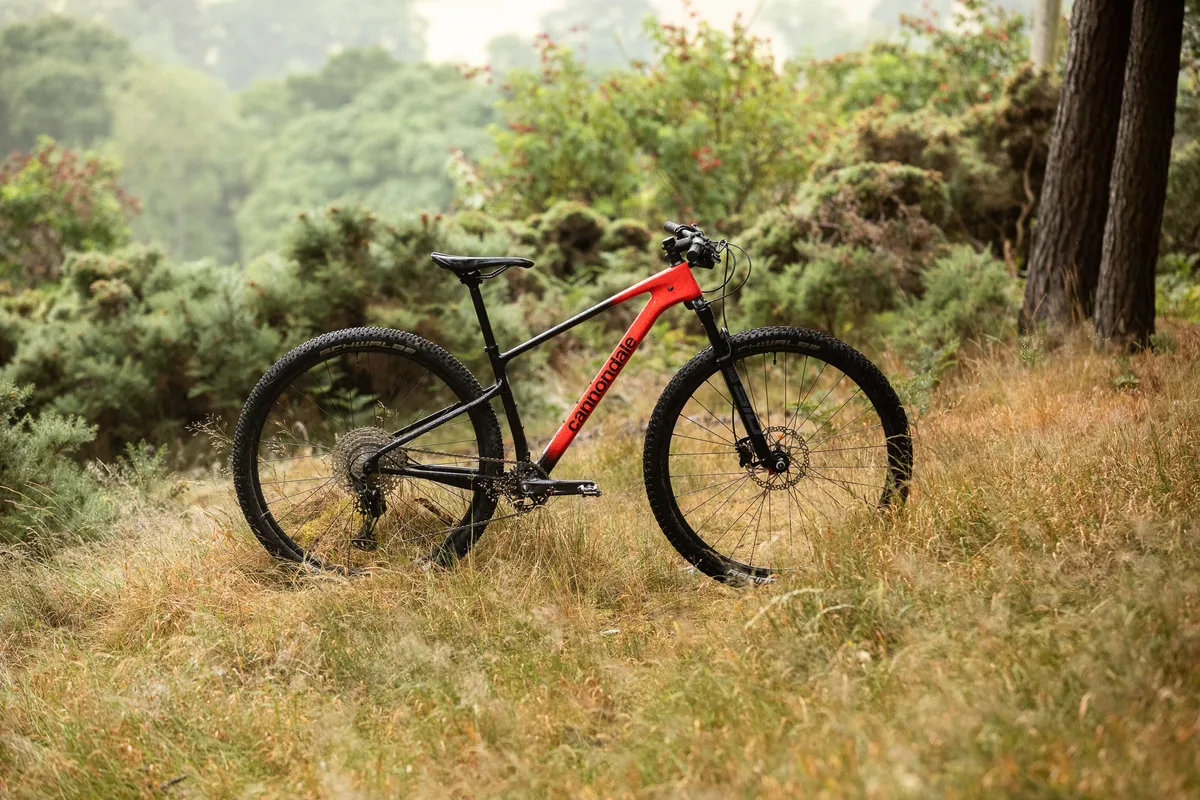
If they’re good enough for the likes of Evie Richards and Tom Pidcock, they’ll be great for the rest of us.
If you’re in the market for a fast-riding hardtail, weight and efficiency are the top concerns, but what else should you look for and how do you choose the right model and spec?
Frame geometry is crucial; the angles and proportions of the bike will influence how it rides, and can spell the difference between hair-raising and high-speed descending.

Frame stiffness is equally important; a lightweight bike is great, but if it’s too rigid it’ll beat you up over long distances. Look at the fork and other kit, too. If some of the parts aren’t up to the job ask yourself whether you’re willing to put up with them until they need replacing.
All the available choices can be overwhelming, so I've pitted more affordable versions of two leading brands’ top-flight race bikes against each other – Specialized’s Epic Hardtail Comp and Cannondale’s Scalpel HT Carbon 4 – and tested them over a range of trails at Glentress, in Scotland, where the 2023 Cross-Country World Championships will be held.
Do these race-orientated rigs deliver on spec, speed, comfort and value – and will you be as tempted as me to add a cross-country mountain bike to your ‘quiver’?
Here I'll directly compare these two big-hitting XC bikes, but you can also read my full Specialized Epic Hardtail Comp review and Cannondale Scalpel HT Carbon 4 review for the individual verdict on both bikes.
Introducing the two bikes
Cannondale Scalpel HT Carbon 4
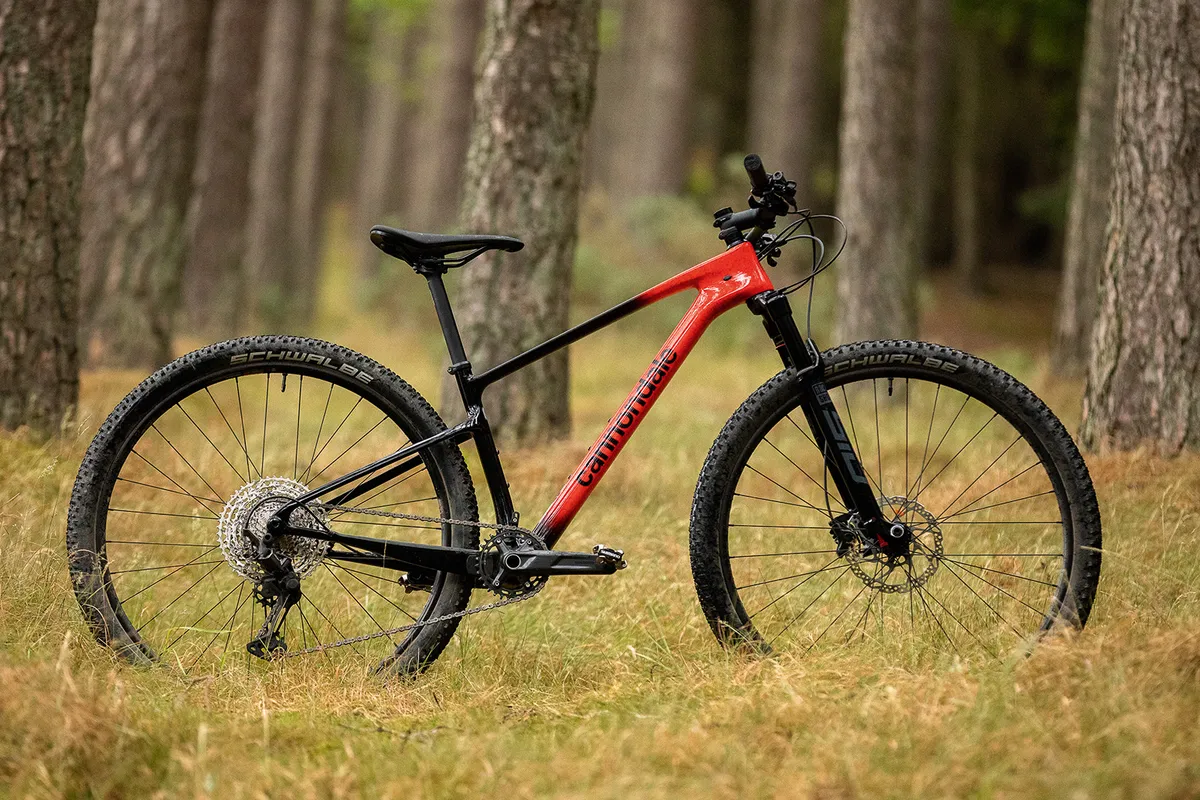
Slack for an XC hardtail, the Scalpel’s modern geometry should make it feel calm on technical descents.
Add its lightweight carbon frame construction with 'sculpted flex zones' in the chainstays, claimed to iron out trail chatter, and it looks like a capable machine.
It’s equipped with a RockShox SID SL fork and Shimano parts, and a host of Cannondale-branded components complete the build.
Cannondale Scalpel HT Carbon 4 details
- Comfort and joy: Having the seatstays join the seat tube below its junction with the top tube should make the frame flexier, helping to reduce the amount of vibration from the ground that transmits to the rider.
- Bossing it: There are three bottle cage bosses on the down tube and two on the seat tube, but these limit how far the seatpost can be inserted.
- Sleek silhouette: Internally routed cables keep the frame looking tidy, and there’s a port for a dropper post in case you want to upgrade later on.
Cannondale Scalpel HT Carbon 4 specifications
- Sizes: S (tested), M, L, XL
- Weight: 11.4kg (25.1lb), small size without pedals
- Frame: Scalpel HT Carbon
- Fork: RockShox SID SL, 100mm travel
- Drivetrain: Shimano Deore with Deore XT rear derailleur (1x12)
- Wheelset: WTB STX i23 rims on Shimano hubs
- Tyres: Schwalbe Racing Ray EVO (f) and Racing Ralph EVO (r) TwinSkin 29x2.25in tyres
- Brakes: Shimano Deore MT501/500, 160mm rotors
- Bar: Cannondale 2 alloy, 760mm
- Stem: Cannondale 2 alloy, 75mm
- Seatpost: Cannondale C3 alloy
- Saddle: Cannondale Scoop
- Price: £2,600 / $2,300 / €2,699
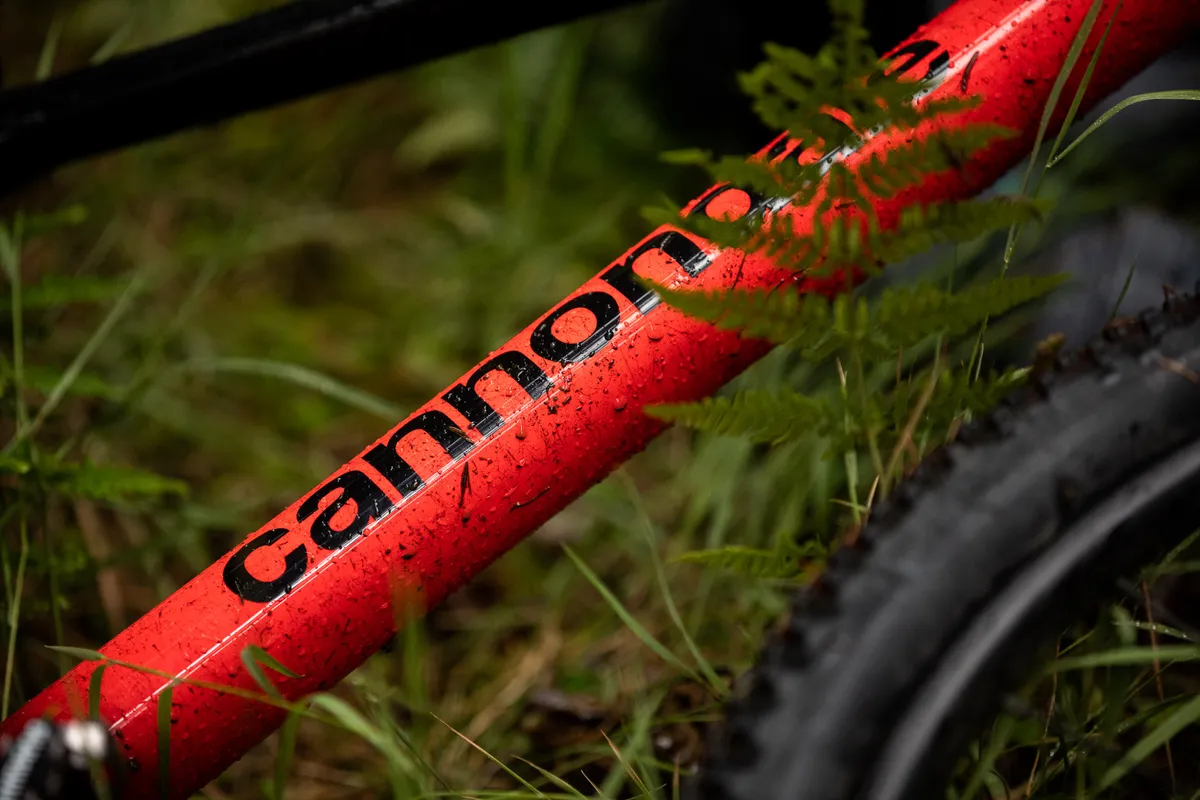
Cannondale Scalpel HT Carbon 4 geometry
| | S | M | L | XL |
|---|---|---|---|---|
| Seat angle (degrees) | 73.2 | 74 | 74.6 | 75 |
| Head angle (degrees) | 67 | 67 | 67 | 67 |
| Chainstay (mm) | 430 | 435 | 440 | 445 |
| Seat tube (mm) | 390 | 440 | 480 | 530 |
| Top tube (mm) | 571 | 594 | 617 | 640 |
| Head tube (mm) | 99 | 110 | 122 | 135 |
| Fork offset (mm) | 55 | 55 | 55 | 55 |
| Trail (mm) | 10 | 10 | 10 | 10 |
| Bottom bracket drop (mm) | 62 | 62 | 62 | 62 |
| Bottom bracket height (mm) | 315 | 315 | 315 | 315 |
| Wheelbase (mm) | 1,124 | 1,154 | 1,183 | 1,214 |
| Standover (mm) | 748 | 785 | 814 | 850 |
| Stack (mm) | 602 | 612 | 623 | 635 |
| Reach (mm) | 410 | 430 | 450 | 470 |
Specialized Epic HT Comp
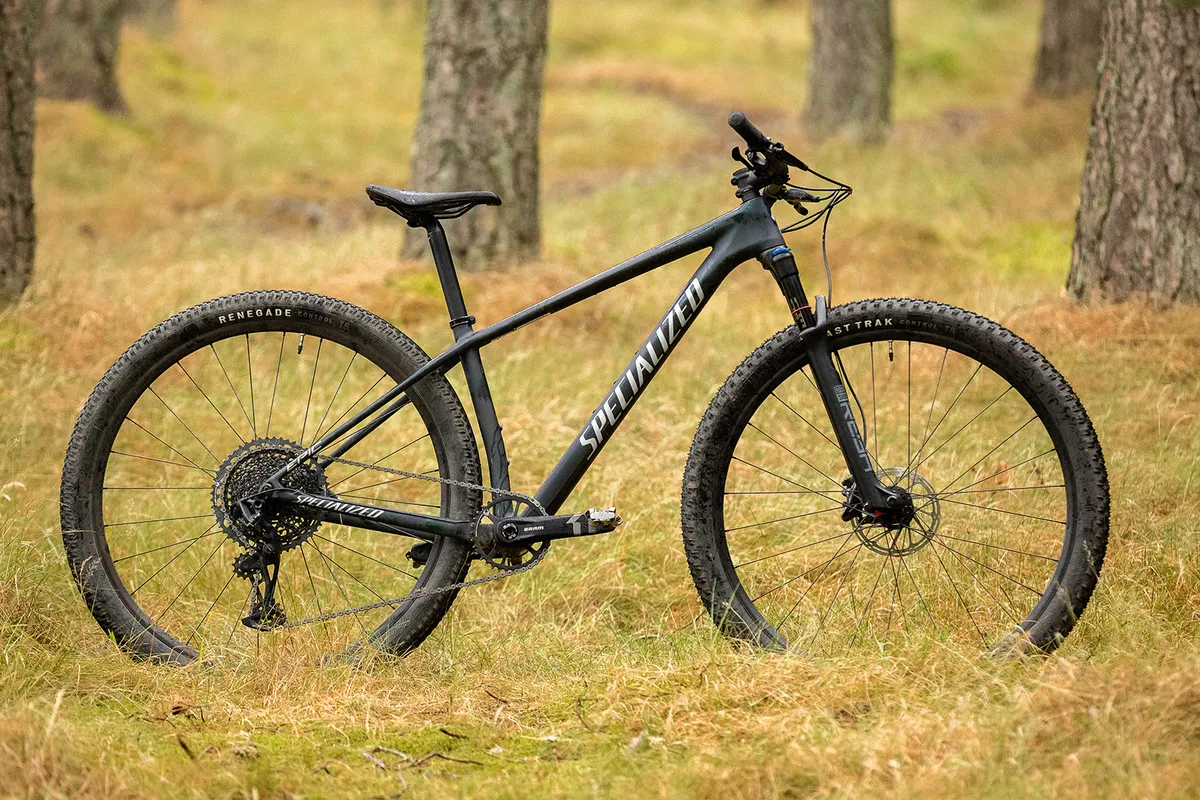
The Epic Hardtail’s carbon chassis is designed to deliver lightweight racing speed without hammering its rider, thanks to in-built flex.
Despite not compromising on comfort, at its launch Specialized claimed it was the lightest production hardtail frame in the world.
This mid-range model is fitted with a RockShox Reba RL fork, SRAM GX Eagle drivetrain and Specialized’s own wheels, tyres, bar, stem and saddle.
Specialized Epic HT Comp details
- Perfect perch: Saddle fit is always going to be subjective, but for me, Specialized has the shape and materials dialled on the BG Power. A short nose ensures you’re less likely to get hooked up on it, and a cut-out saves sensitive areas.
- Fork foibles: While it works fine on smoother ground, when the going gets chunky the Epic Hardtail’s RockShox Reba RL fork struggles to recover over repeated hits, forcing the rider to take up the slack.
- Racing rubber: The high volume and low tread of Schwalbe’s Ralph and Ray tyres make them relatively fast-rolling. Just watch yourself through mud!
Specialized Epic HT Comp specifications
- Sizes: S (tested), M, L, XL
- Weight: 10.44kg (23lb) small size without pedals
- Frame: ‘Fact 11m’ carbon fibre
- Fork: RockShox Reba SL, 100mm travel
- Drivetrain: SRAM GX Eagle (1x12)
- Wheelset: Specialized wheels
- Tyres: Specialized Fast Trak Control T5 (f) and Renegade Control T5 (r) 29x2.35in tyres
- Brakes: SRAM Level TL
- Bar: Specialized alloy, 750mm
- Stem: Specialized alloy
- Seatpost: Specialized alloy
- Saddle: Specialized Body Geometry Power Sport
- Price: £4,100
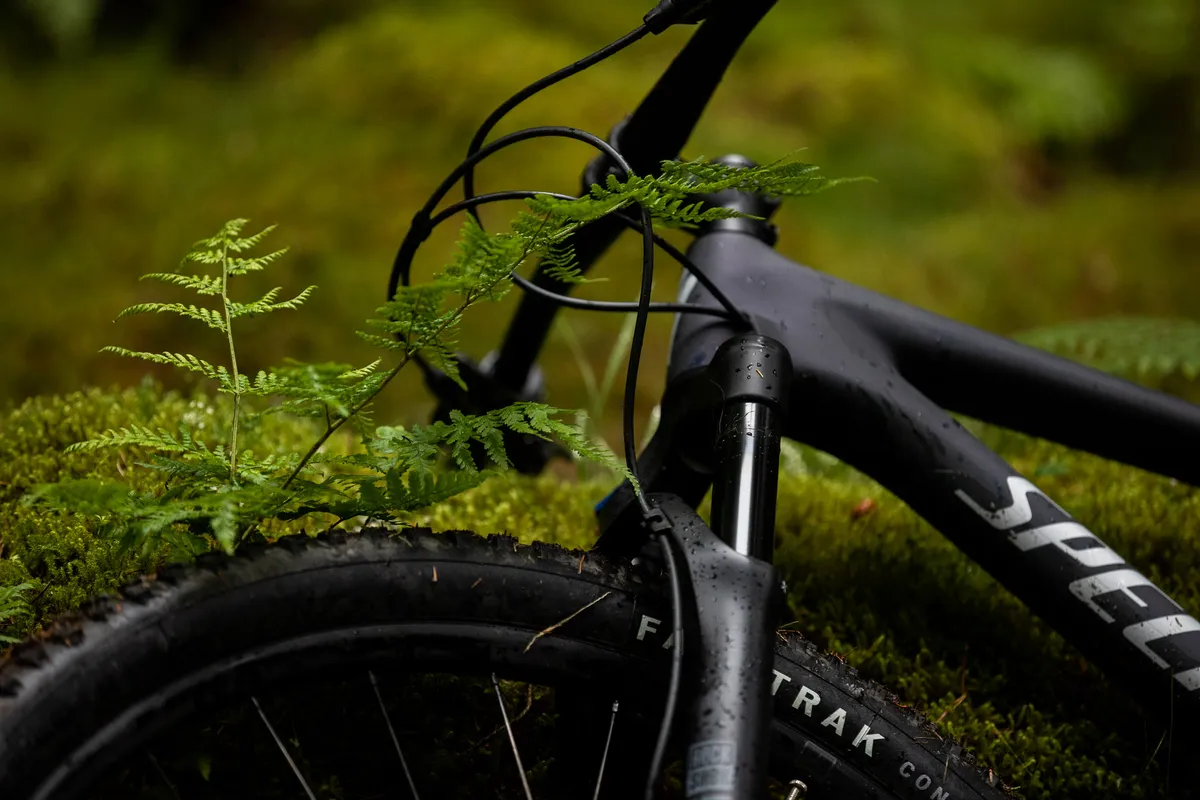
Specialized Epic HT Comp geometry
| | S | M | L | XL |
|---|---|---|---|---|
| Seat angle (degrees) | 74 | 74 | 74 | 74 |
| Head angle (degrees) | 68.5 | 68.5 | 68.5 | 68.5 |
| Chainstay (mm) | 430 | 430 | 430 | 430 |
| Seat tube (mm) | 400 | 430 | 470 | 520 |
| Top tube (mm) | 579 | 604 | 633 | 662 |
| Head tube (mm) | 95 | 95 | 110 | 125 |
| Fork offset (mm) | 42 | 42 | 42 | 42 |
| Trail (mm) | 103 | 103 | 103 | 103 |
| Bottom bracket drop (mm) | 63 | 63 | 63 | 63 |
| Bottom bracket height (mm) | 309 | 309 | 309 | 309 |
| Wheelbase (mm) | 1,090 | 1,115 | 1,146 | 1,176 |
| Standover (mm) | 762 | 792 | 816 | 847 |
| Stack (mm) | 608 | 608 | 622 | 636 |
| Reach (mm) | 405 | 430 | 455 | 480 |
| Crank length (mm) | 170 | 175 | 175 | 175 |
| Stem length (mm) | 60 | 70 | 70 | 70 |
| Seatpost length (mm) | 350 | 400 | 400 | 400 |
How does the Cannondale Scalpel HT Carbon 4 compare to the Specialized Epic HT Comp?
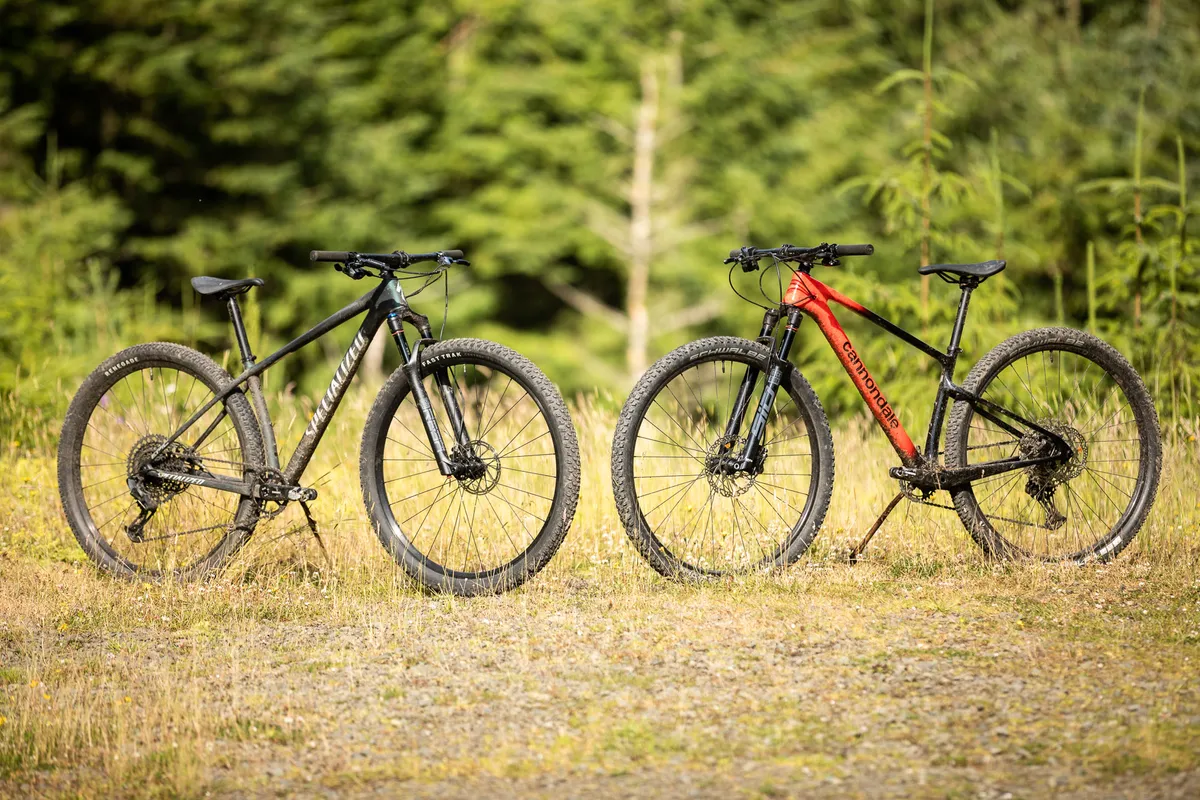
The Cross-Country World Cup scene has seen increasingly janky downhill sections in courses and riders have had to up their game to triumph on race day. XC frames have consequently evolved to be lighter, faster and more capable.
A factor in this adaptation is the geometry – those all-important numbers affecting how the bike handles and, therefore, the confidence it inspires.
With the emergence of enduro racing in the early 2010s came a gradual acceptance of the confidence- and stability-boosting benefits of slacker, longer and lower geometry.
Subsequently, geometry charts have changed across the board, to a point where most brands are now hovering around a sweet spot of angles and proportions that best suit each bike’s purpose.
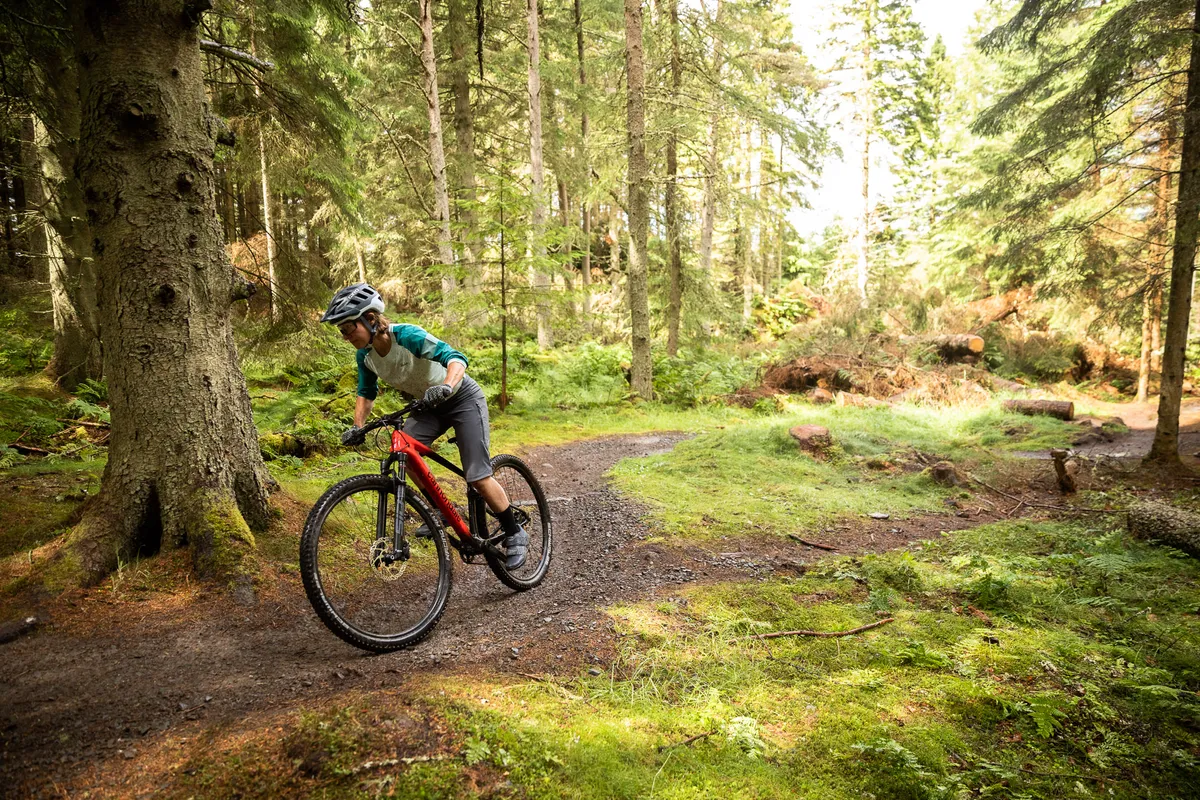
Even hardcore XC race hardtails now have figures influenced by this gnarlier discipline, although many are still a little off the pace given how rapidly race courses are progressing.
Both brands here tout their rigs as ‘comfortable and capable’ courtesy of changes in frame shape and construction.
In-built compliance means they should offer a less jarring ride than XC bikes from years gone by, while the stretching of geometry figures means riders can survive sending them down ever rougher, steeper trails.
Numbers game
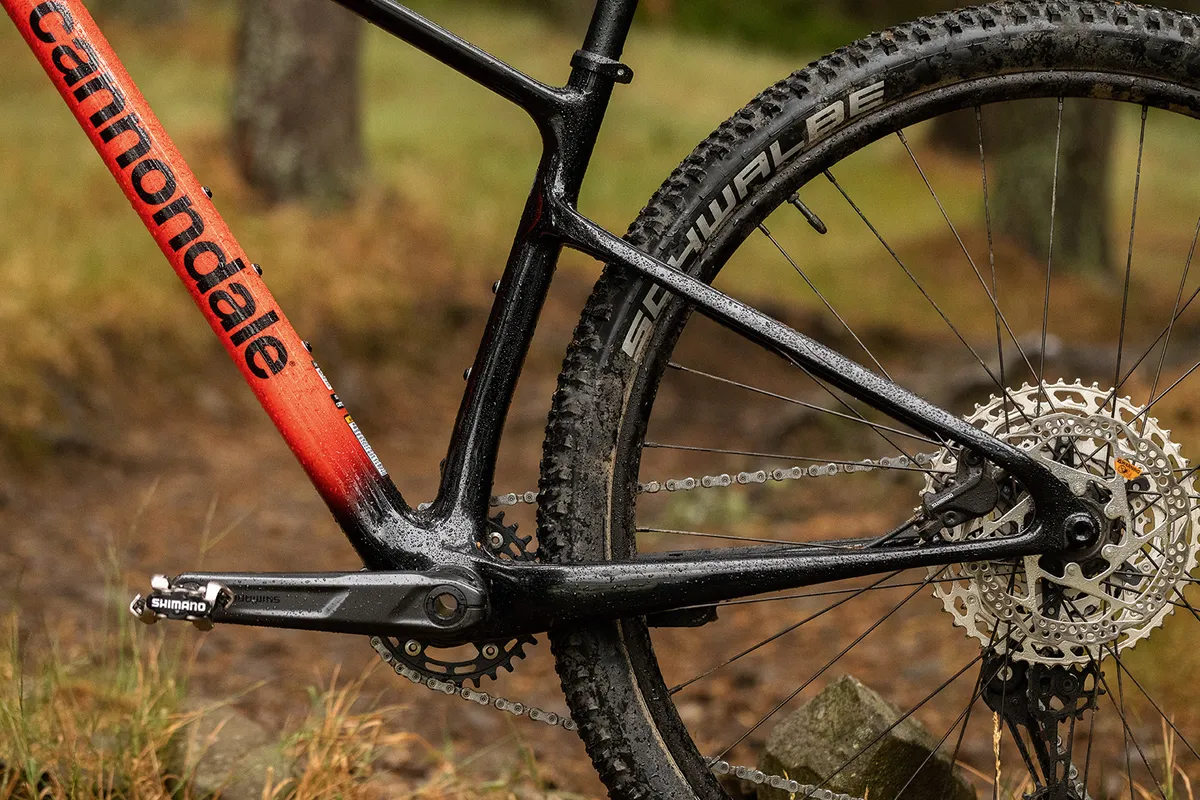
Specialized has kept the Epic Hardtail’s geometry the same since it slackened the head angle to 68.5 degrees and lengthened the reach and wheelbase, to 405mm and 1,090mm respectively (size small), back in 2020.
The 30.9mm seat tube is here to stay, too; its larger diameter offers more options for a future dropper post upgrade and adds stiffness by reducing fore-aft flex when the rider is seated.
The top tube arcs gracefully and blends seamlessly into the slim seatstays, which provide some compliance, aiding comfort. Aesthetically, you’d expect nothing less from this market-leading brand.
A new paintjob sees the Epic Hardtail swathed in grey with a striking green sheen. When the frame is wet, the green sparkles, akin to on a high-end racing car, but I wish they’d given it a gloss top coat to keep its shine.
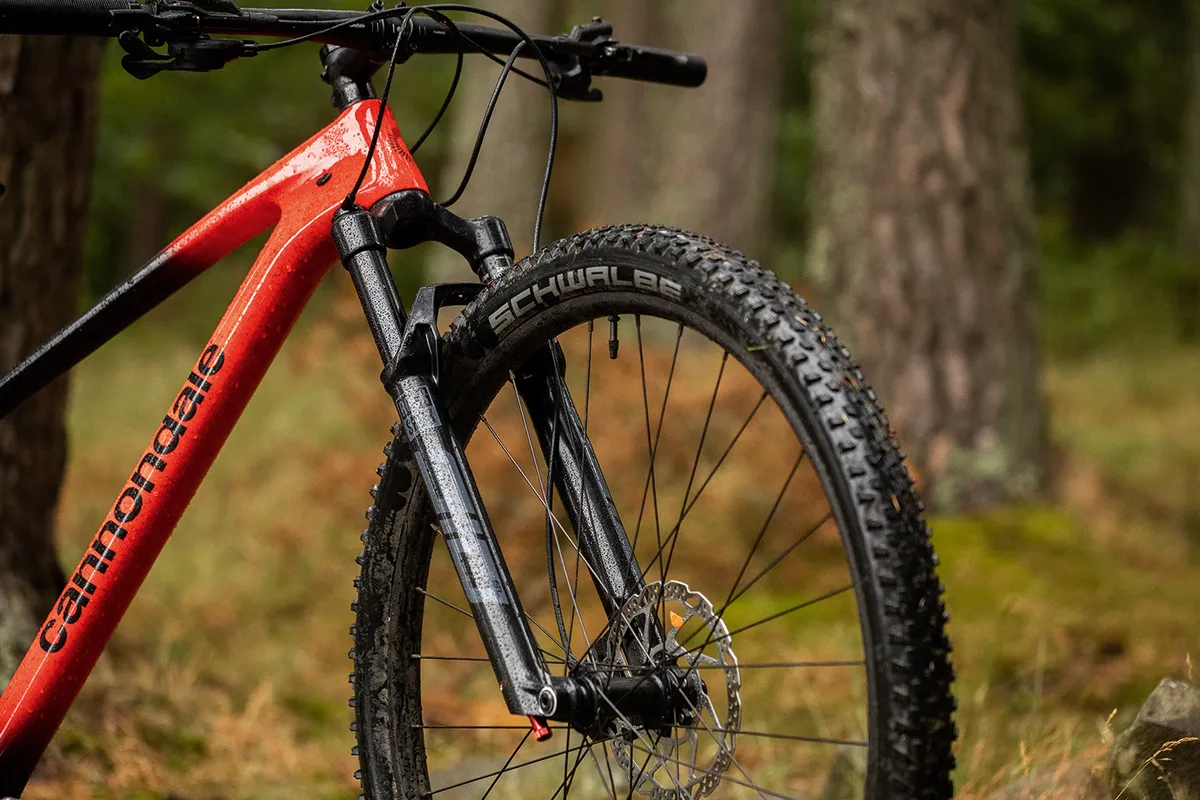
Cannondale has also retained the same numbers this year, because the Scalpel was a fresh design in 2021, replacing the F-Si as its XC race hardtail.
With a ‘go hard or go home’ approach, Cannondale gave the new bike more aggressive geometry, including a slacker 67-degree head angle (with the 100mm-travel fork specced here; fitting a 110mm fork changes it to 66.5 degrees) and a longer reach and wheelbase (410mm and to 1,124mm, small).
That makes it both slacker and longer than the Specialized. The rear triangle features dropped seatstays and ‘sculpted flex zones’ in the chainstays, claimed to “boost control, smooth the ride and minimise fatigue”.
Both frames have provision for two bottle cages within the front triangle. On the size-small Scalpel I tested, the seat tube bosses are positioned relatively high up and protrude internally, limiting how far you can lower the seatpost.
I like to be able to drop the saddle by around 150mm for technical descents, but this wasn’t possible.
Specs appeal
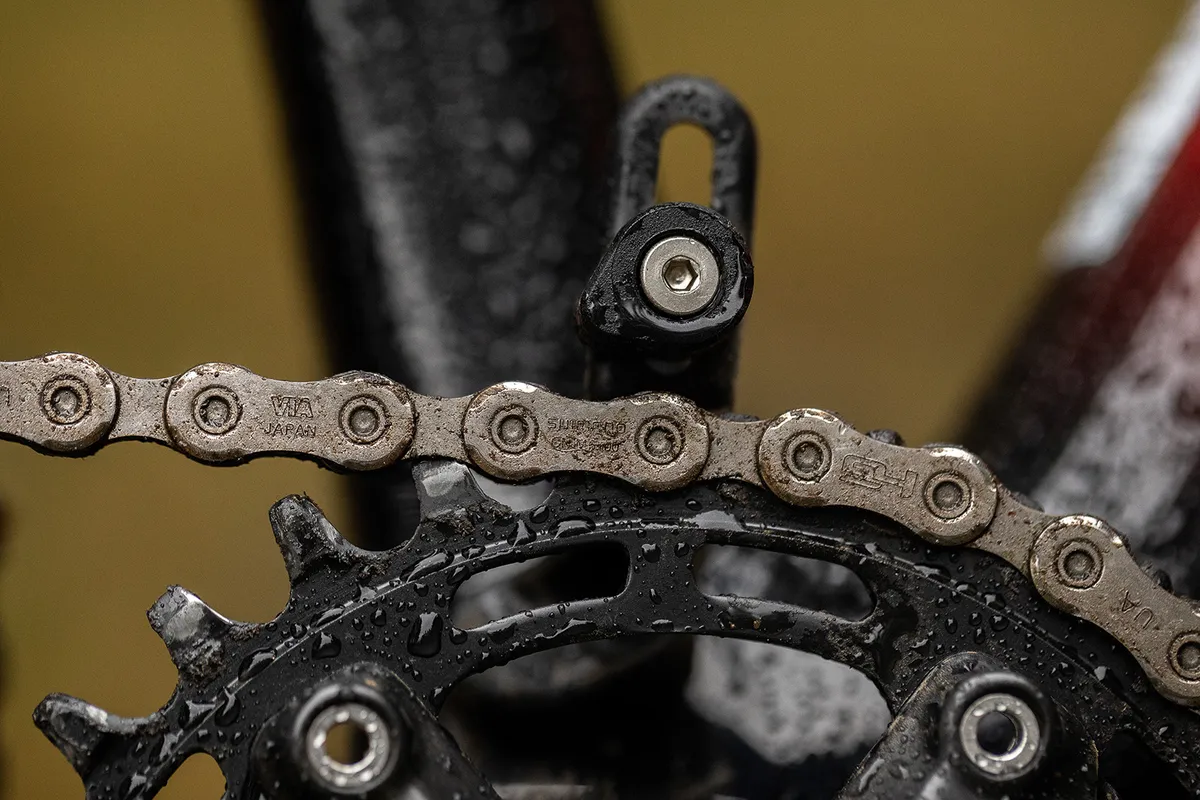
Given the huge price gap between the two bikes (the Epic’s RRP increased by £400, from £3,700, during the test period), the most striking and surprising spec difference is their forks – the more expensive Epic is fitted with RockShox’s mid-range Reba RL, while the Cannondale has the World Cup-proven SID SL, albeit the most affordable version.
Both have 100mm of travel. Out on the trail, the SID SL is far superior to the Reba when it comes to absorbing small, rumbly chatter and braking bumps, as well as remaining composed-feeling on technical descents.
I could really feel the difference over the fine bumps found on fireroads and through repeated stepped and rooty sections.
On the latter, the Reba felt as though it was starting to get out of its depth and was diving into its travel, forcing me to take up the slack through my hands, arms and upper body.
This is fine if you’re only riding more extreme trails every now and again, but I think you’ll soon want to upgrade if you like to ride techy sections on a regular basis.
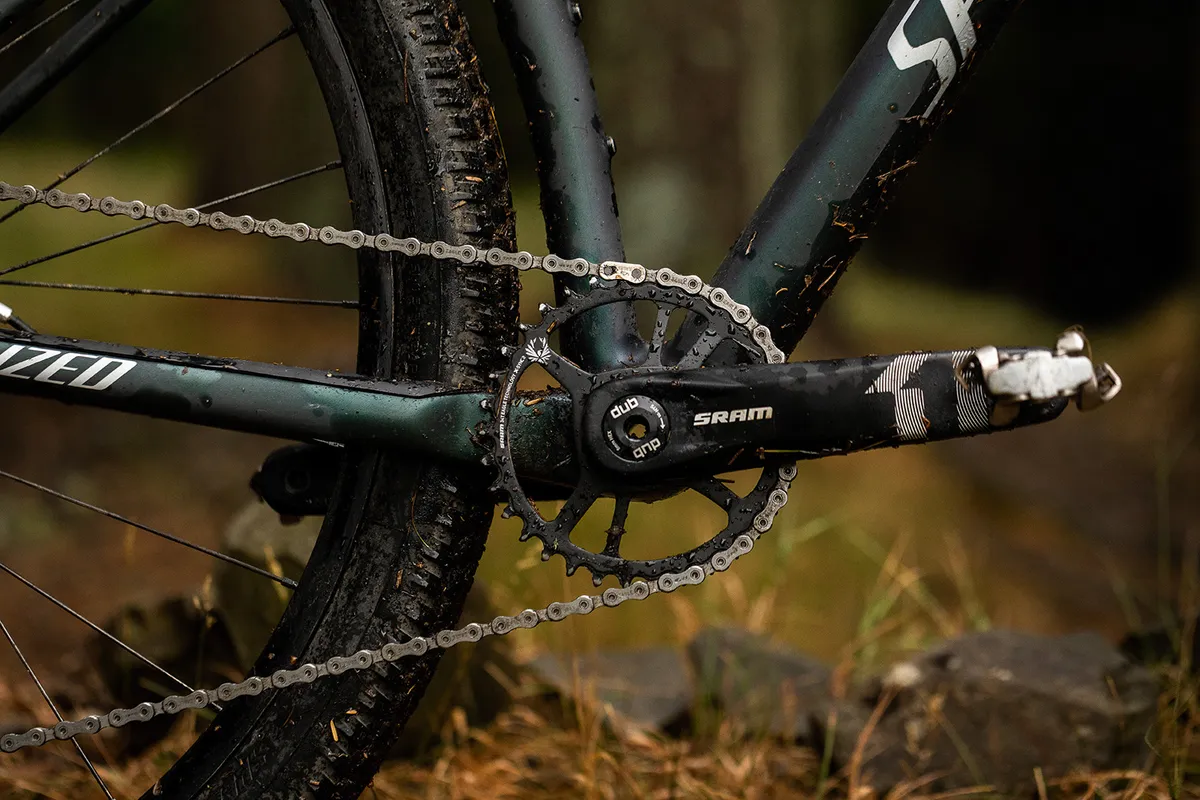
The two bikes have different gear ratios, with my Epic Hardtail having a bigger 34t chainring and wider-range 10-52t cassette (the spec has changed to a 32t ring on the latest models).
This helps add pace on long, flat sections and shallow descents where carrying speed is key, but means you need to maintain good speed on steeper climbs or dig deeper to avoid turning your legs at low cadences.
My Scalpel’s 32t ring and 10-51t cassette make those short and steep, punchy climbs a fraction more forgiving, and if you get the 30t ring listed on Cannondale’s website, this will be even more the case.
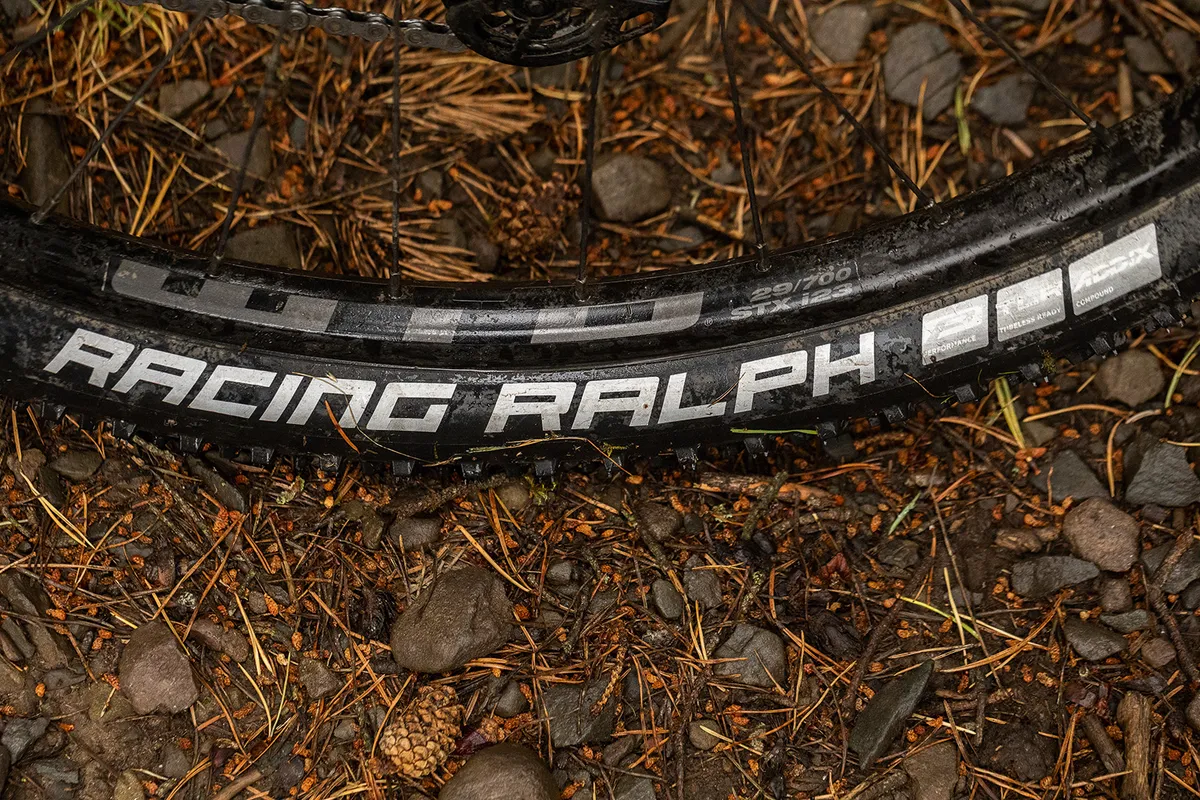
SRAM’s Level brakes feature on the Specialized. These mid-range TL versions have enough power for mellow XC routes, but when I needed to stop with urgency they lacked outright stopping force and bite.
The Shimano Deore MT500 anchors on the Cannondale have the edge over the Levels, offering more power when slowing down from high speeds, but still left me wanting a bit of extra grunt when executing short, sharp braking.
Dropping in
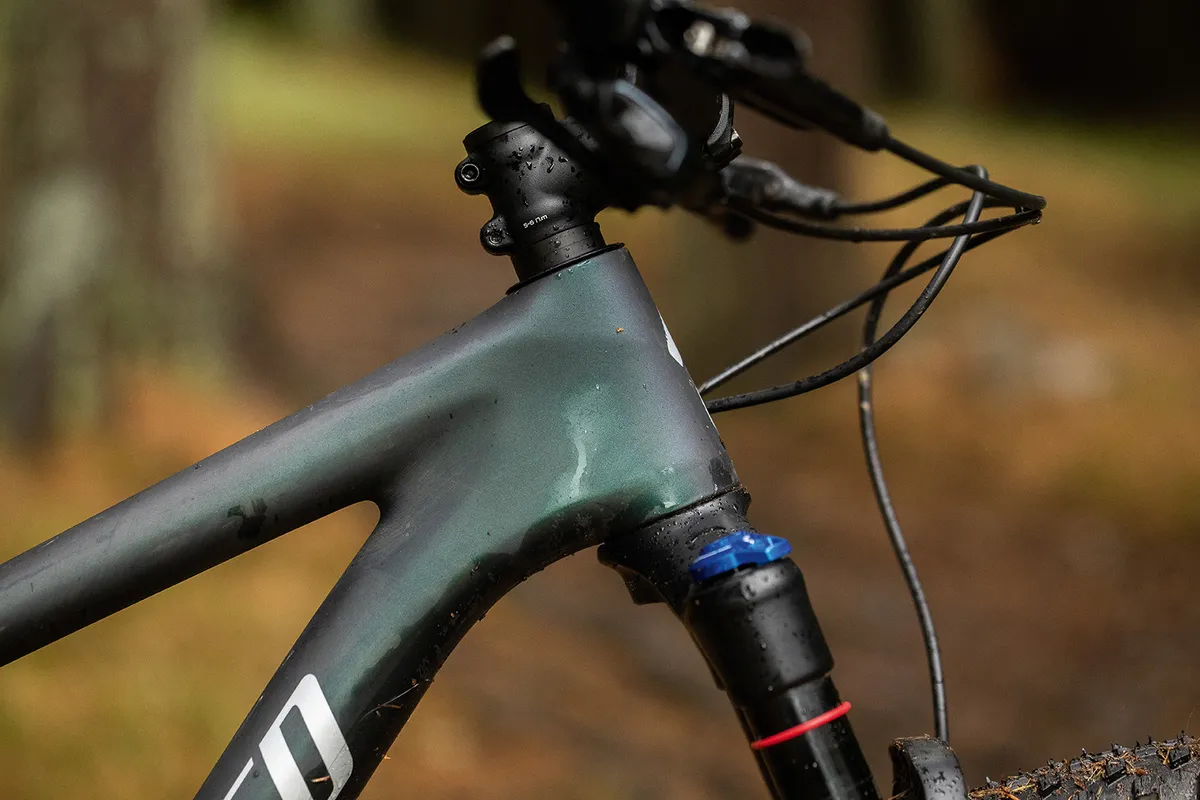
All the cables are routed internally, with a spare port in both frames for a dropper post, which I feel these bikes need desperately. Droppers are becoming more common on XC bikes, with World Cup and Olympic racers choosing to run them on more technical trails.
However, individual preference differs, so both brands opt to give us a lightweight fixed post as standard.
Never underestimate the difference a saddle can make to the feel of a bike and how much power you’re prepared to lay down.
Specialized’s Power Sport perch is one of the most comfortable I’ve tried, but I can’t say the same for the Fabric Scoop Shallow Sport on the Cannondale, which I had to swap out after the first ride.
Of course, it may suit your posterior just fine.
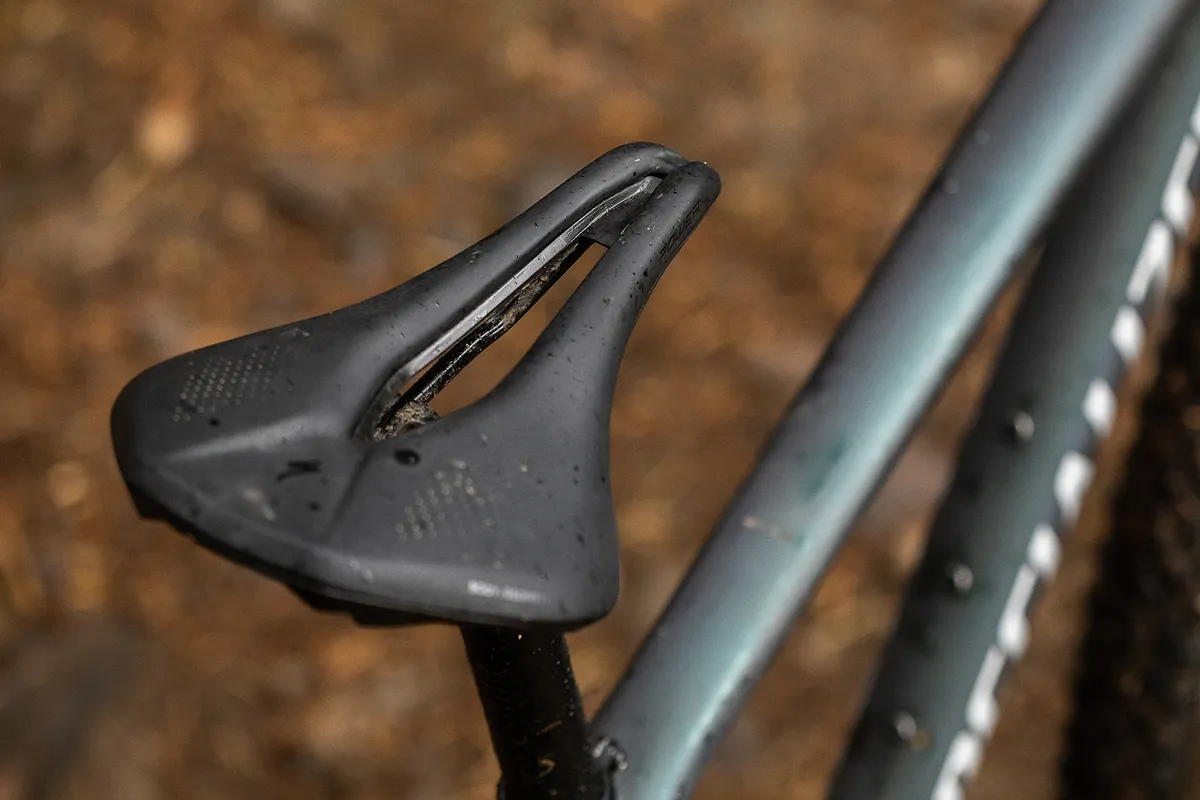
Ridden in isolation, I was pleasantly surprised by how much surface rumble the Epic Hardtail ironed out on trail-centre tracks and how fast, nippy and fun it is.
On smooth, flowy singletrack, fireroads and blue/red-graded loops, the Specialized feels right at home and encouraged me to pedal hard, even with tired legs, for the reward of speeding along the trail.
Once I’d ridden the Scalpel, though, my definition of smooth was recalibrated.
The Cannondale’s compliance is dialled up several notches compared to the Specialized. It’s impressive how much rough terrain is smoothed out by this bike.
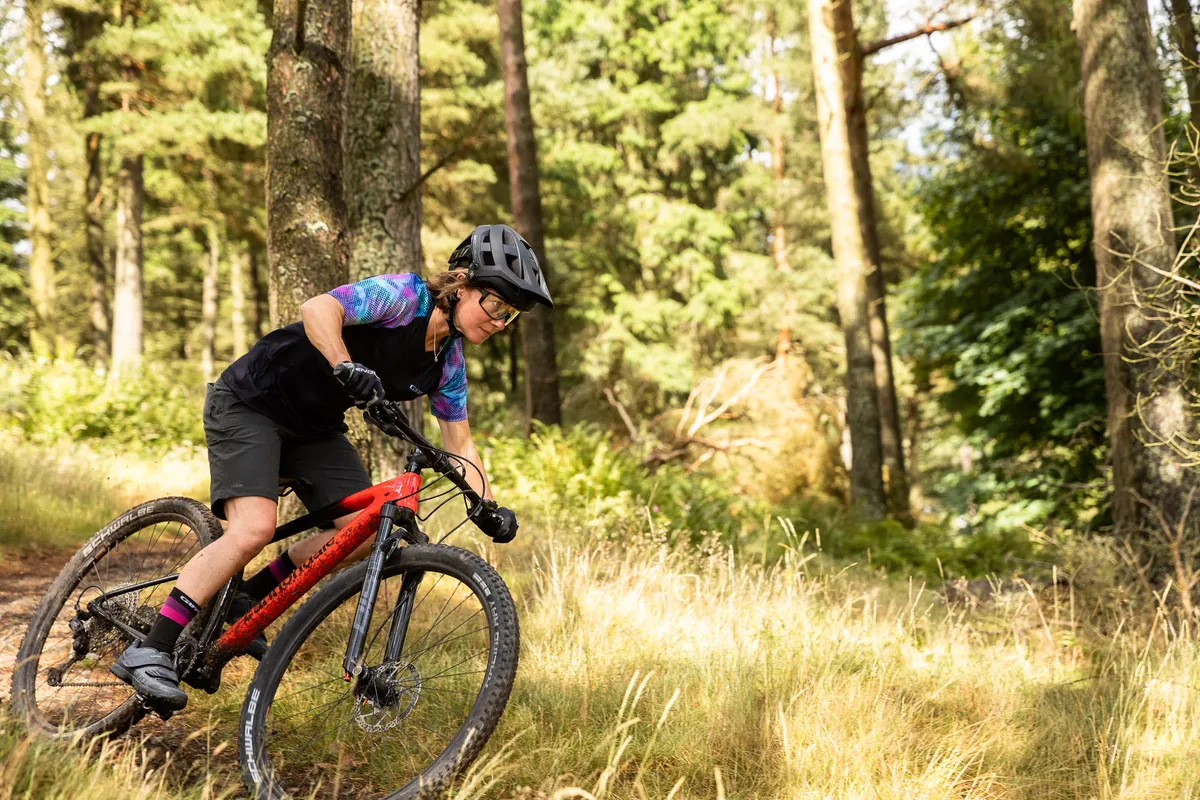
In contrast, the Epic Hardtail transmits fireroad vibrations and shallow potholes through your upper and lower body, and when pedalling the two bikes back-to-back, I could immediately appreciate the difference in grip, too.
Despite the differences in stiffness, both bikes have a playful feel, which makes searching for roots, rocks and little kickers to pop off both fun and rewarding. It’s possible to gap sections of trail just because you can.
They both made me feel like a young kid on a new bike, looking for the next jump to send.
Weight a minute
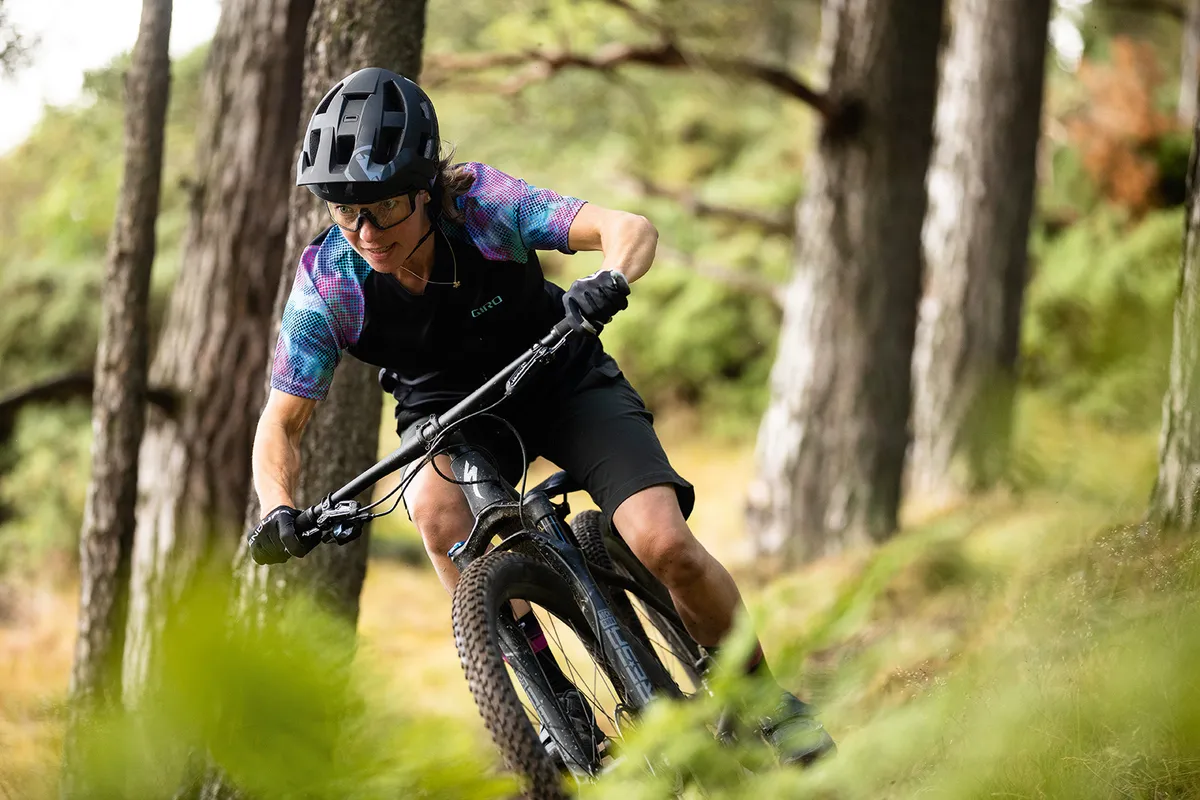
Over smooth ground, both contenders come into their own. The Epic Hardtail rolls slightly faster, mostly because its rubber has a less aggressive tread pattern.
The Scalpel’s Racing Ray and Ralph tyres have bigger, chunkier blocks than the Specialized’s Fast Trak and Renegade pairing.
Acceleration, again on smooth ground, is marginally more responsive and punchier on the Epic, thanks to it being about a kilo lighter.
However, I had to focus hard to notice the difference, and once up to speed I was hard-pressed to separate the two bikes.
Putting them to the test on my sprint segment – consisting of some short climbs, descents and flat sections on a well-used black trail-centre run – things flipped in favour of the Cannondale.
On the Epic Hardtail, I spent approximately 60 per cent of the trail hovering above the saddle to avoid jarring from riding over rough ground, at the cost of burning in my legs.
I expected to get rattled around, with no rear suspension, but it was noticeably trickier to keep traction and composure on the Epic, while continuously shifting weight and correcting my body position to accommodate the lack of control when pedalling hard.
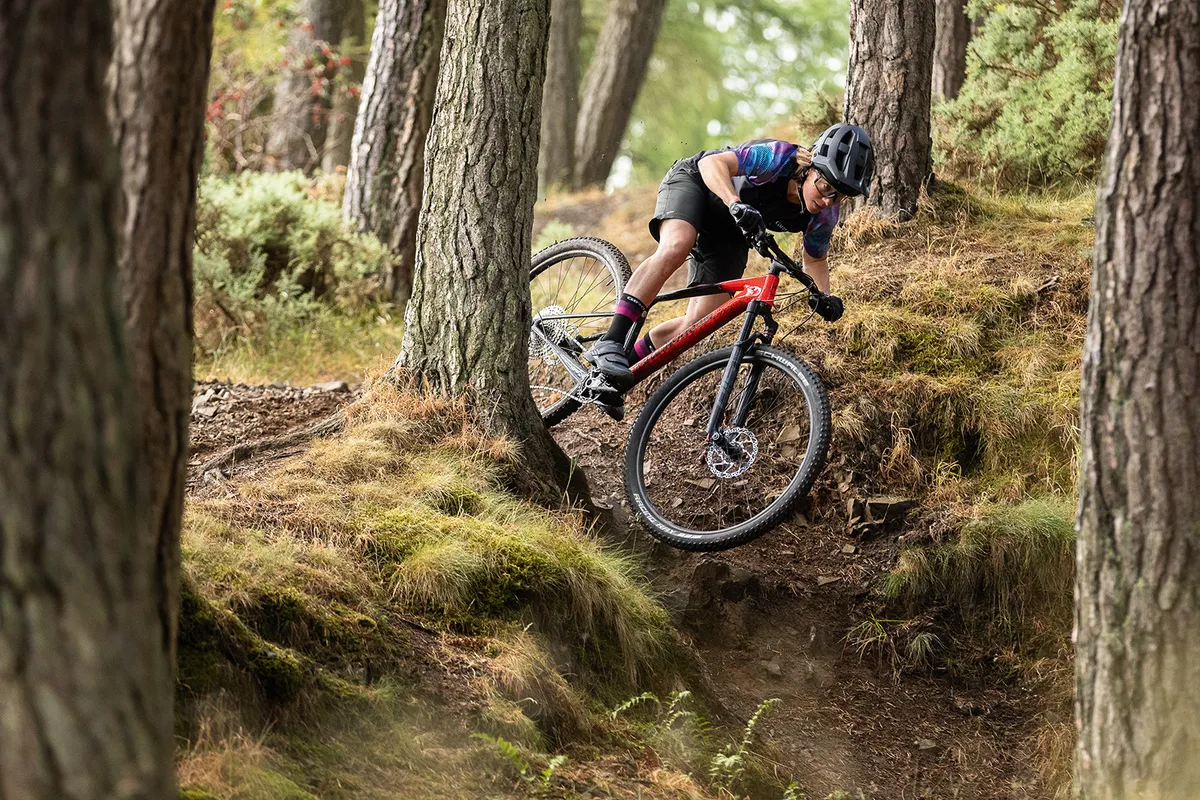
The heavier Cannondale proved much smoother on these rougher trails, so maintaining momentum and pace was a fair chunk easier, making for a faster segment time and a comfier ride.
This goes to show that light weight shouldn’t be the highest priority when it comes to racing against the clock.
On paper, much of the Epic’s geometry is pretty similar to that of the Scalpel, however there’s a big difference in head angle (1.5 degrees) and wheelbase (34mm).
How much does this influence the bikes’ handling? Despite the variation in numbers appearing small, the differences on the trail were marked. The seat tube angle affects pedalling efficiency.
On both bikes, I found that with the saddle centred over the seatpost, it put my hips too far over the back wheel and behind the bottom bracket, forcing me to round my lower back and giving the feeling that I couldn’t put down adequate power.
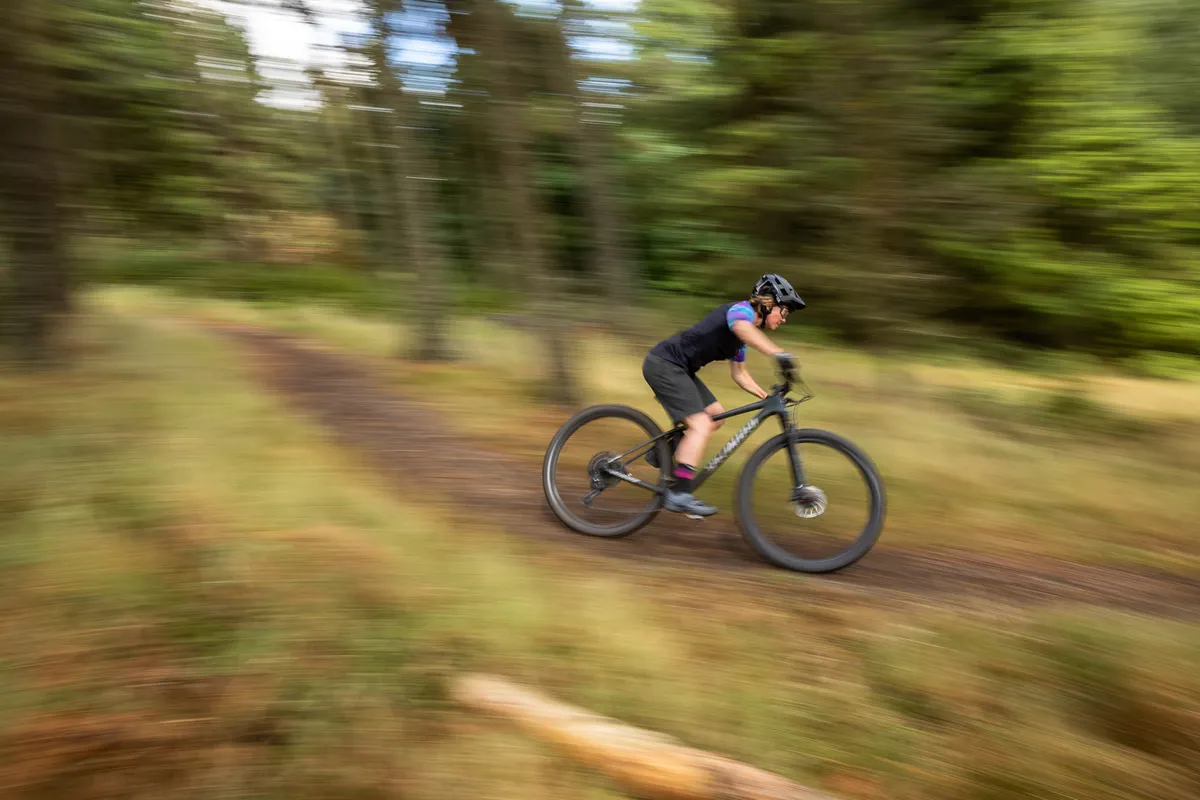
To make seated pedalling more efficient and comfortable, I pushed the seat as far forward as possible on both bikes, effectively trying to increase the seat tube angle.
The head angle is noticeably steeper on the Epic Hardtail, and I could feel the effect of this in even the shallowest of turns, where the steering response was increased.
Rolling off chunky steps, I found myself bracing to keep the front wheel pointing in the desired direction, rather than tucking under my weight. I was able to push harder in turns on the Scalpel, thanks to its slacker head angle, but also the extra grip afforded by the chunkier rubber.
The Specialized does carve around uphill turns and switchbacks with balance and precision, though, courtesy of its steeper head angle.
Interestingly, through those same corners the Cannondale’s steering seemed slightly awkward and more sluggish, with rider input and motion feeling mismatched. Curiosity got the better of me, so I swapped the long 75mm stem for a 55mm one.
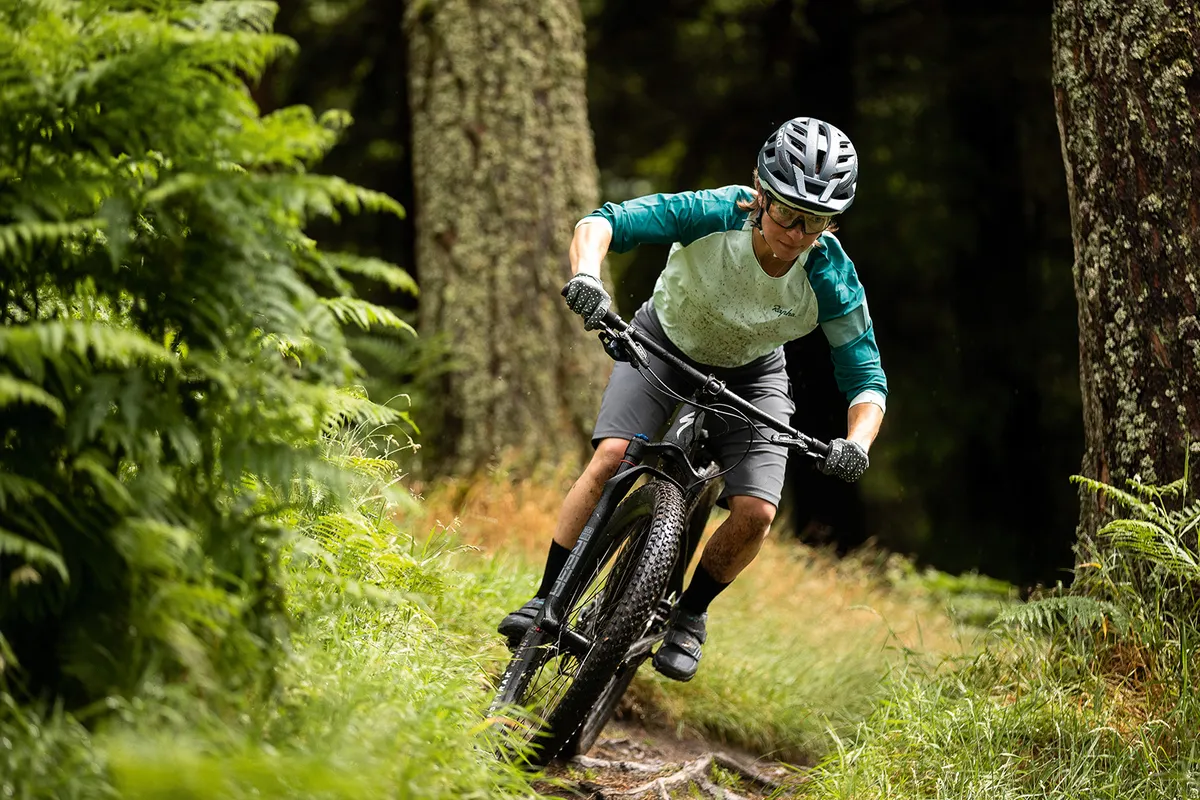
This eliminated that sensation of something feeling ‘off’ with the Scalpel and gave it the same balanced climb feel as the Epic. The shorter stem helped me feel like as though I was in a more confident position for tackling steeper, punchier ascents and uphill switchbacks.
However, it made me feel a bit cramped on the ascents, so I ended up sliding the saddle back again.
This illustrates the difficulty of translating enduro-style geometry across to XC bikes; while a slacker head angle and shorter stem add poise and control on the descents, they’re always going to reduce the effective top tube length and thus your stretch to the bar, even more so when combined with a steeper seat tube angle.
And that’s without going into the potential aerodynamic benefits of a longer stem for racing.
Both bikes allowed for comfortable seated pedalling, even after miles in the saddle. When standing, however, the Cannondale’s marginally longer reach meant there was more space to both sprint hard and move the bike around when descending.
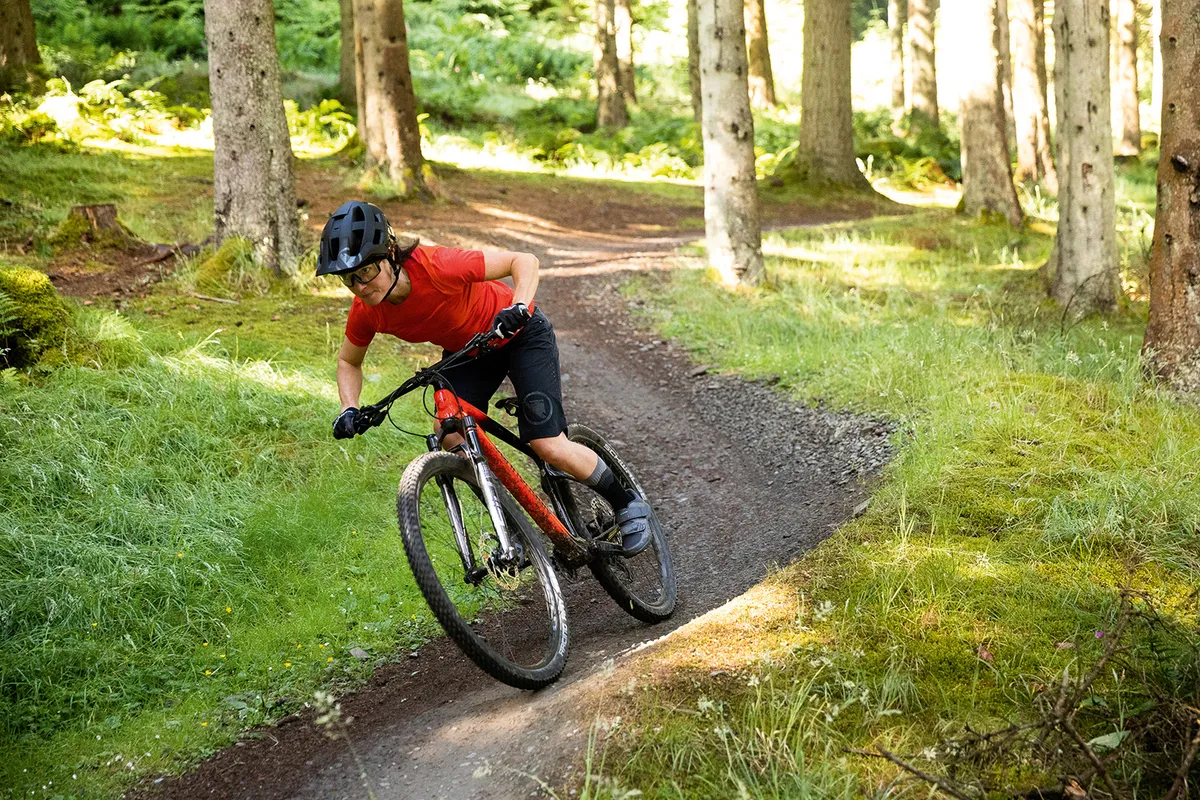
The shorter Specialized felt less spacious in comparison. Although a longer stem would help, it’s not something I’d recommend fitting because of the negative effect on handling.
My Scalpel was supplied with a long steerer tube on the fork, which left plenty of room for bar-height adjustment. I settled on 10mm of spacers under the stem.
When set to this height, if the bar was turned enough – for example, if it spun around in a crash – the gear shifter would hit the top tube. The Epic Hardtail didn’t suffer the same issue.
Both bikes proved to be quite noisy on rough terrain. On the Specialized, this was caused by the integrated headset creaking from time to time and the internally routed cables moving inside the frame. Grippier cable stops (where the control lines enter the frame) would reduce this.
While the Scalpel didn’t suffer from cable rattle, there was plenty of chain slap, despite checking the rear mech’s clutch mechanism was switched on and the chain was the optimum length. The Cannondale’s brake pads rattled in the calipers, too.
Hard-charging
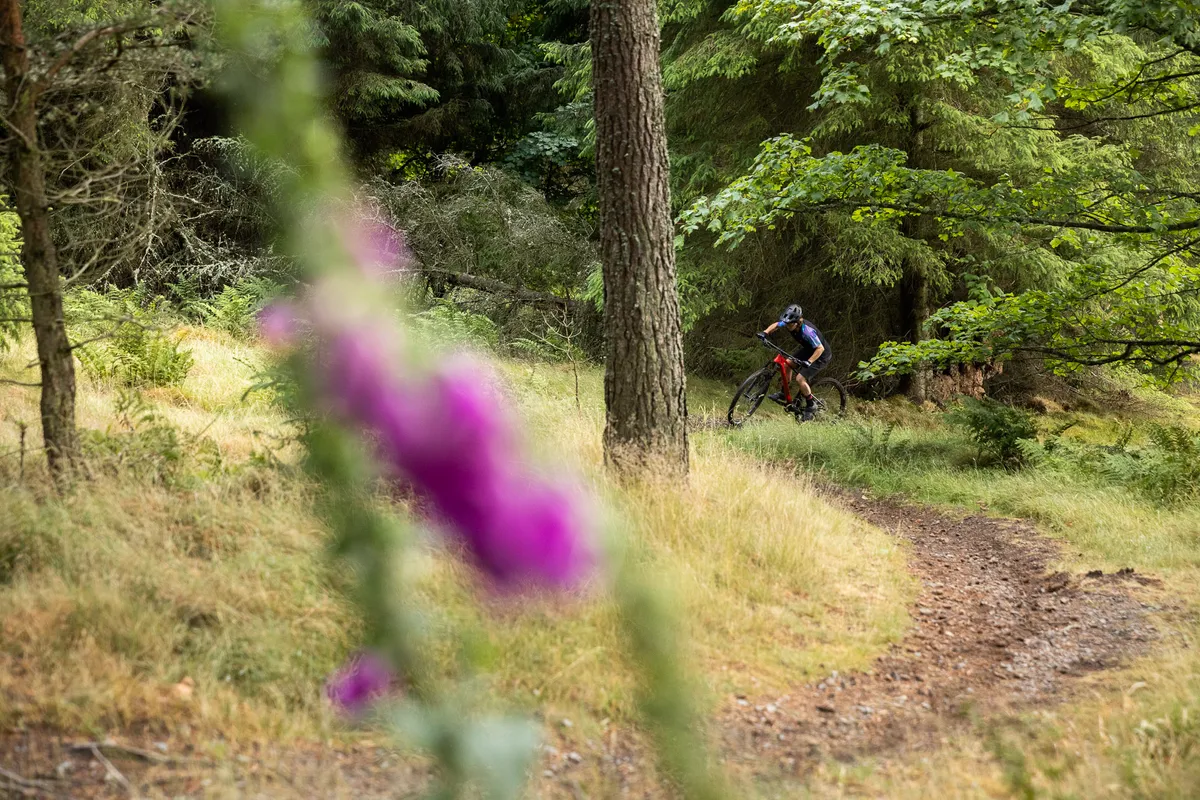
XC race bikes have undergone a significant makeover in the past few years. The Epic Hardtail and Scalpel prove this type of bike is no longer a one-trick-pony.
Manualling, popping off kickers and carving turns on bermed trails can be exhilarating on them, while their low weight and racy rubber make carrying speed easy.
The Epic Hardtail feels stiffer, with a solid ride that some may find reassuring, but I felt it caused increased fatigue on longer rides, because I had to move around more to reduce the harshness.
While the Specialized is more manoeuvrable than the Cannondale, it’s more tiring, and therefore less fun.
And the winner is…
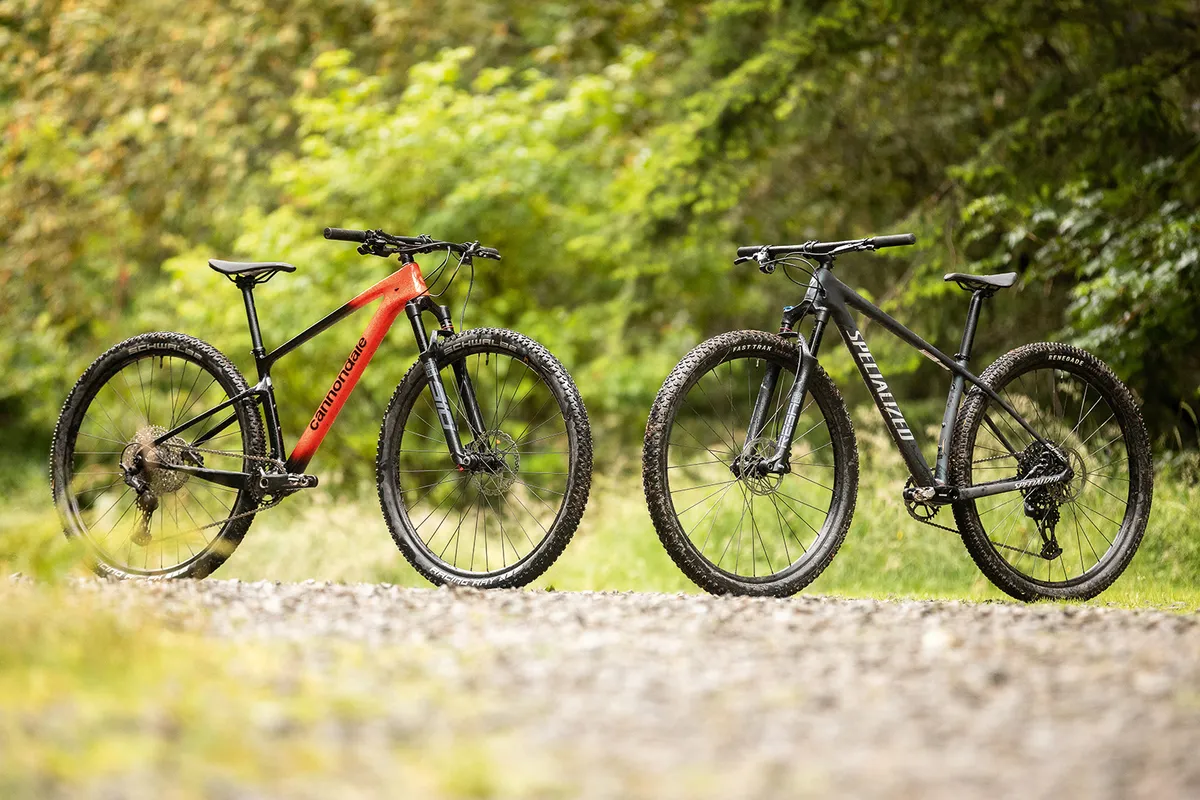
This test has highlighted how you can never judge a book by its cover – or a bike by its geometry chart – and how paying more won’t necessarily get you a better frame nor spec.
The Epic Hardtail’s parts, geometry and frame feel are in line with what most of the competition is offering, but these are the very things that let it down.
Its Reba fork and its chassis stiffness contribute to a jarring and tiring ride on all-day adventures or high-speed singletrack missions – the exact type of riding the bike is designed for.
When pushing harder, the Specialized’s less forgiving ride means its performance doesn’t always match your ambition on techy trails. You could upgrade to a better fork, but there’s nothing you can do about the limited rear-end compliance.
However, it is a great choice for training and racing on smooth XC courses or simply enjoying gentler forest trails.

Both bikes possess a fun, whippy character that truly redefines what’s possible on a cross-country hardtail. Like me, you’ll find yourself scanning the trail for smooth lines to keep speeds high and the power down to reach new levels of fun that weren’t previously possible on this ilk of bike.
However, there’s no question that Cannondale has put together an altogether plusher ride, while retaining the acceleration and fun I love about XC hardtails.
Not only does the Scalpel have a more comfortable and forgiving ride, it’s significantly cheaper with a better fork, brakes and gears.
The only things I’d change are the position of the bottle bosses on the small frame, along with fitting a more comfortable saddle and a shorter stem.
Overall verdict
Cannondale Scalpel HT Carbon 4
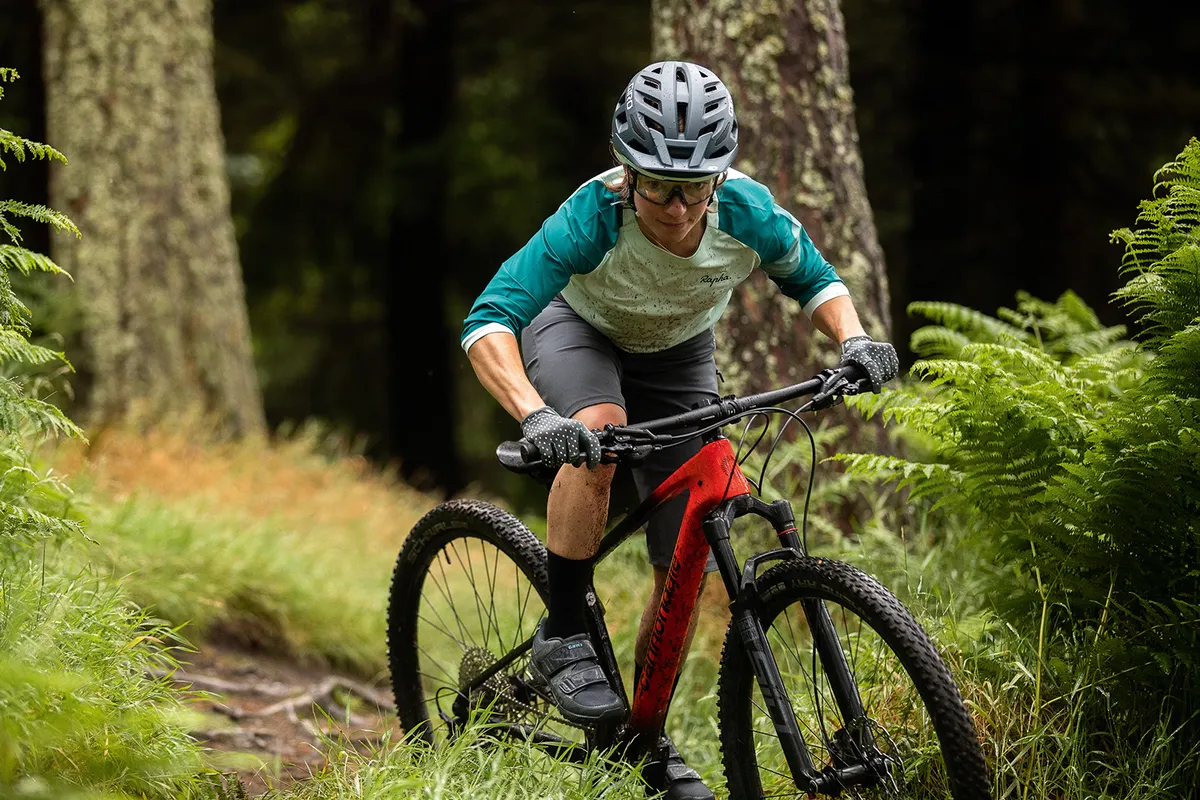
The Scalpel delivers impressive performance across the board at a great price, and upgrading the seatpost to a dropper post would unlock even more potential for not much extra cash.
Specialized Epic Hardtail Comp
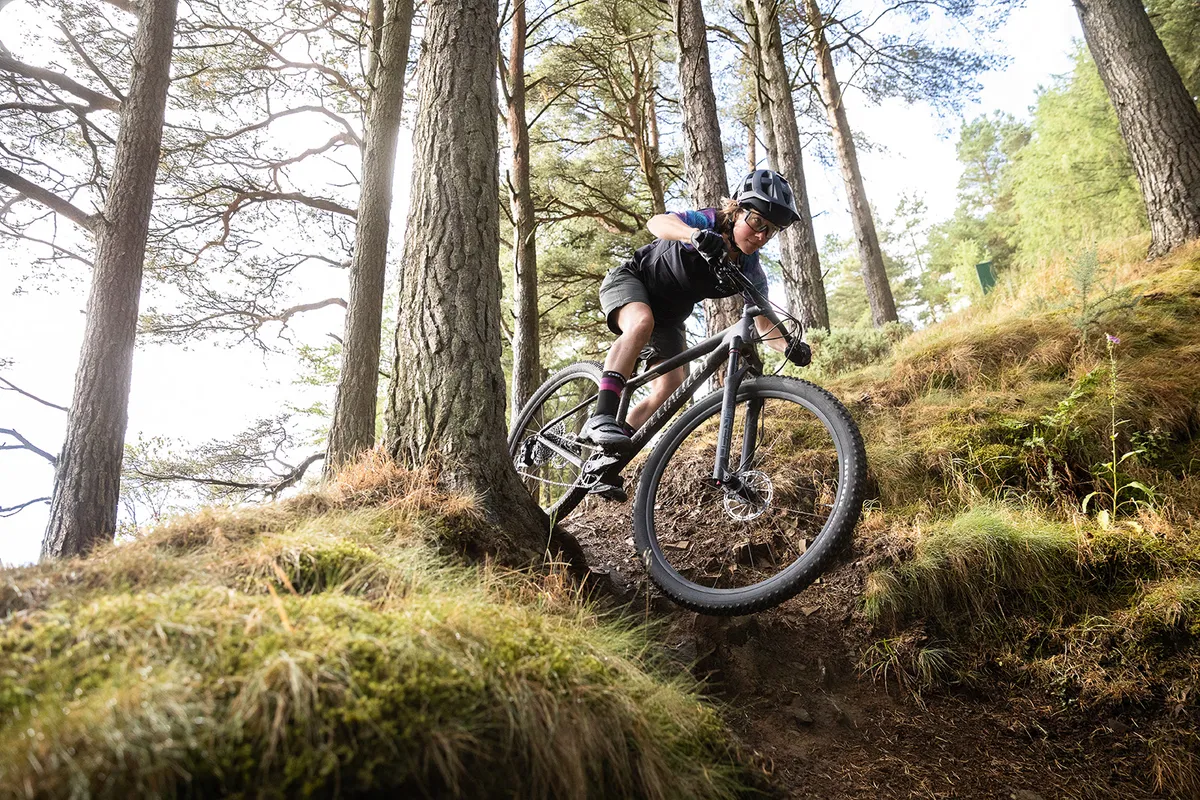
While the Epic Hardtail is fast-rolling and playful on mellower trails, it lacks the smoothness and more modern geometry that would enable you to really attack all terrain types – plus it costs £1,500 more.
